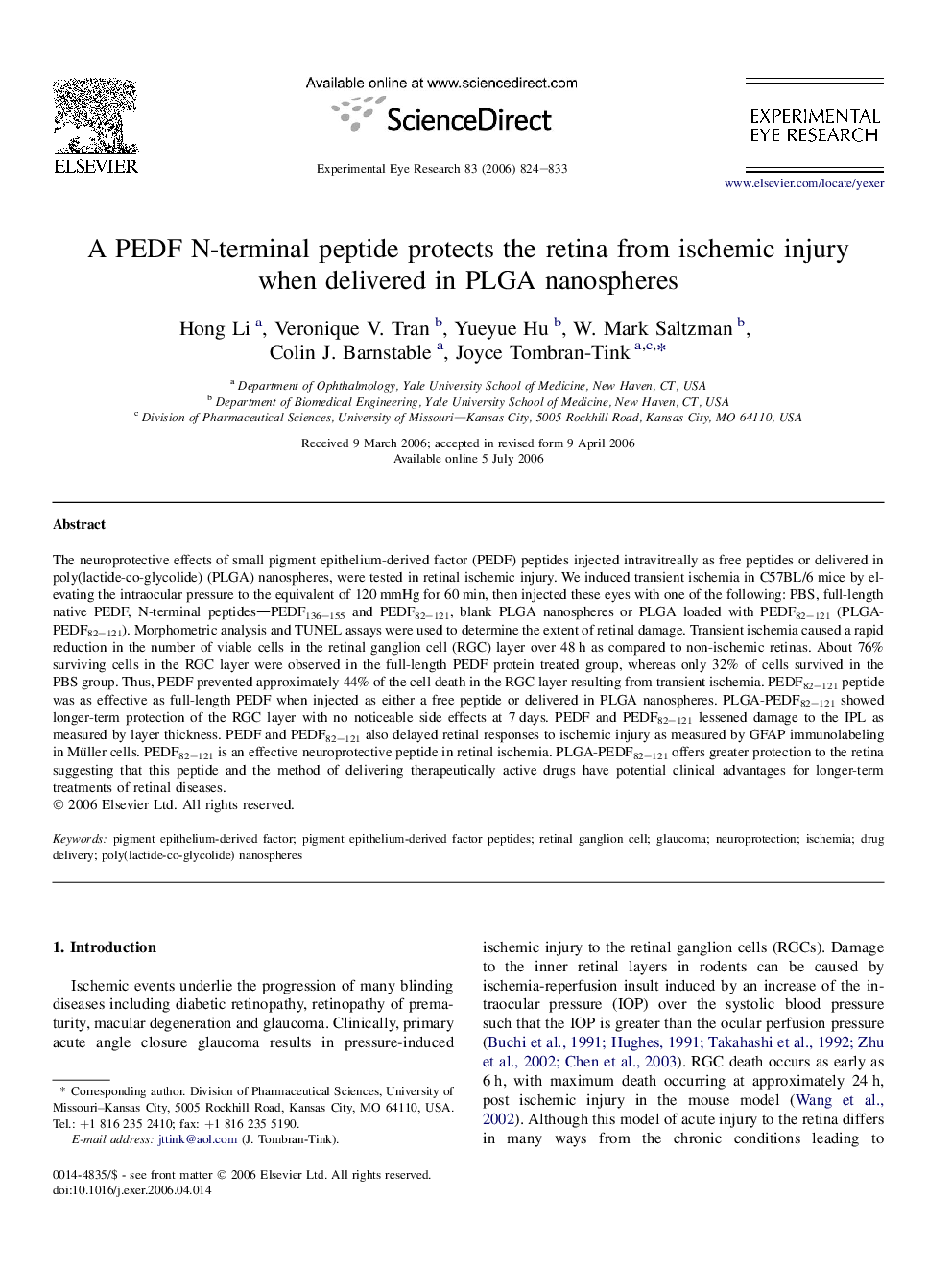| Article ID | Journal | Published Year | Pages | File Type |
|---|---|---|---|---|
| 4013018 | Experimental Eye Research | 2006 | 10 Pages |
The neuroprotective effects of small pigment epithelium-derived factor (PEDF) peptides injected intravitreally as free peptides or delivered in poly(lactide-co-glycolide) (PLGA) nanospheres, were tested in retinal ischemic injury. We induced transient ischemia in C57BL/6 mice by elevating the intraocular pressure to the equivalent of 120 mmHg for 60 min, then injected these eyes with one of the following: PBS, full-length native PEDF, N-terminal peptides—PEDF136–155 and PEDF82–121, blank PLGA nanospheres or PLGA loaded with PEDF82–121 (PLGA-PEDF82–121). Morphometric analysis and TUNEL assays were used to determine the extent of retinal damage. Transient ischemia caused a rapid reduction in the number of viable cells in the retinal ganglion cell (RGC) layer over 48 h as compared to non-ischemic retinas. About 76% surviving cells in the RGC layer were observed in the full-length PEDF protein treated group, whereas only 32% of cells survived in the PBS group. Thus, PEDF prevented approximately 44% of the cell death in the RGC layer resulting from transient ischemia. PEDF82–121 peptide was as effective as full-length PEDF when injected as either a free peptide or delivered in PLGA nanospheres. PLGA-PEDF82–121 showed longer-term protection of the RGC layer with no noticeable side effects at 7 days. PEDF and PEDF82–121 lessened damage to the IPL as measured by layer thickness. PEDF and PEDF82–121 also delayed retinal responses to ischemic injury as measured by GFAP immunolabeling in Müller cells. PEDF82–121 is an effective neuroprotective peptide in retinal ischemia. PLGA-PEDF82–121 offers greater protection to the retina suggesting that this peptide and the method of delivering therapeutically active drugs have potential clinical advantages for longer-term treatments of retinal diseases.
